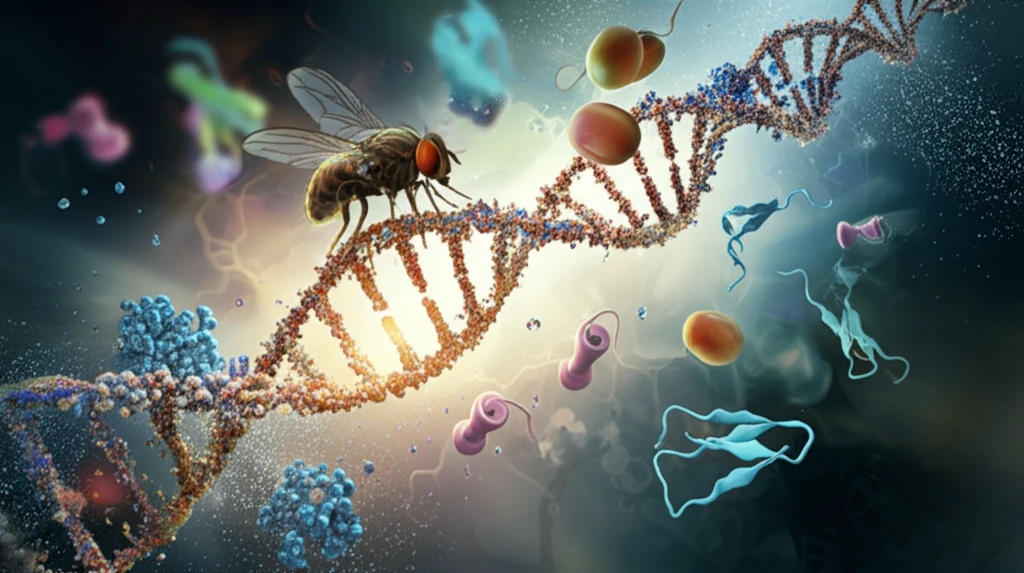
Decoding the Secrets of Our Genes: How Evolutionary Changes Shape Our Traits
"Unraveling the complex relationship between epigenetics, histones, and the evolution of Drosophila"
Epigenetics, the study of how our behaviors and environment can cause changes that affect the way our genes work, is a rapidly evolving field. These changes, unlike genetic mutations, are reversible and don't alter our DNA sequence, but they can change how our bodies read a DNA sequence. Think of it like this: our genes provide the script, and epigenetics direct the play, determining which parts are highlighted and when.
Histones play a crucial role in this process. These proteins act like spools around which DNA winds, forming structures called nucleosomes. How tightly or loosely the DNA is wound affects gene expression—tightly wound DNA is often silenced, while loosely wound DNA is more accessible and active. Different types of histones exist, each influencing gene expression in unique ways. Understanding these variations and how they've evolved can give us profound insights into the mechanisms that control our traits and susceptibility to disease.
The study of Drosophila, or fruit flies, has been instrumental in advancing our knowledge of genetics and epigenetics. These tiny creatures share many biological pathways with humans, making them an invaluable model for research. By examining the evolutionary changes in histone genes within Drosophila, scientists are uncovering fundamental principles that apply across species, including humans.
The Tale of Two Histones: H2A and H2AvD in Drosophila

In a recent study, researchers delved into the evolutionary dynamics of two histone variants in Drosophila: H2A and H2AvD. H2A is a canonical histone, essential for the basic structure of chromatin, while H2AvD is a variant known for its role in nucleosome remodeling and DNA repair. By comparing the genetic sequences of these histones across twelve different Drosophila species, the researchers aimed to understand how these proteins have evolved and how their differences might impact gene expression.
- Gene Pairing: In seven Drosophila species, the H2AvD gene was located head-to-head with the Ball gene, which codes for a histone threonine kinase. This suggests a functional link between the two genes, with Ball potentially involved in modifying histones.
- Conserved Sequences: A highly conserved DNA sequence was found upstream of the H2AvD gene in multiple species, even those without the Ball gene pairing. This sequence likely serves as a crucial transcriptional signal, ensuring proper gene expression.
- Downstream Gene: The SPARC gene, involved in calcium binding, was located tail-to-tail downstream of the H2AvD gene in most species. This conserved arrangement hints at a coordinated regulation of these genes.
Why This Matters: Implications for Human Health and Evolution
The study of histone variants and their evolutionary dynamics in Drosophila offers valuable insights into the complex mechanisms that govern gene expression. Understanding how these mechanisms have evolved can shed light on how organisms adapt to changing environments and how variations in gene expression contribute to disease susceptibility. By continuing to unravel the secrets of our genes, we can gain a deeper understanding of what makes us who we are and how we can improve our health and well-being.
